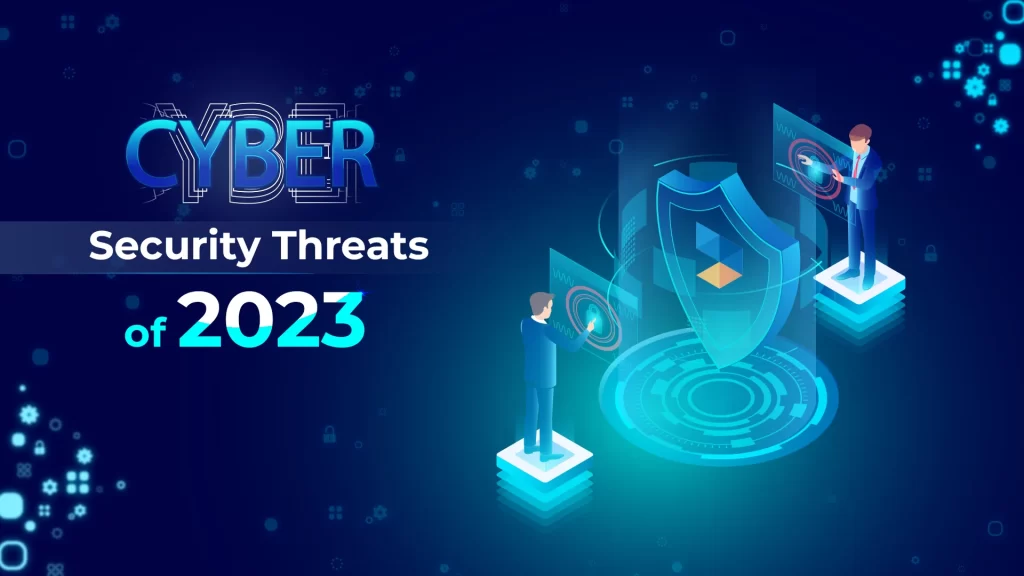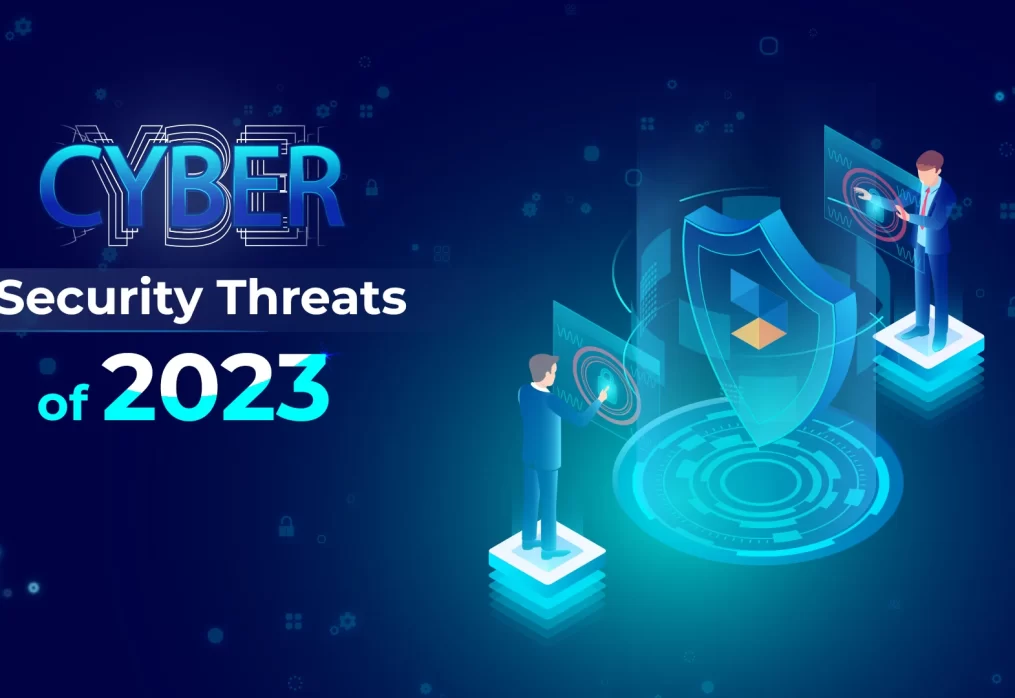February 21, 2023
 by Iveond
by Iveond
Cyber Security Threats of 2023
Cyber Security Threats of 2023
Threats like phishing attacks and ransomware are turning out to be more sophisticated. Furthermore, with a rising number of people working from home, frequently beyond the boundaries of a company-monitored network, cyber security expert awareness is more essential now than ever. Organizations required to do all they can to secure end-users are perfectly trained in online security. Because of this, cyber security has become important for organizations. Cyber security experts at IVEOND share their prediction for the most impactful threat vectors and cyber risks of 2023.

Phishing Attack:Phishing is the most common cyber-attack in use today. This crime involves emails as a disguise, tricking its beneficiaries into believing the message is sent by a real source such as banks, clients, or coworkers. Several times, it includes a malicious link or connection that will lure people into revealing their data, including passwords, credit card numbers, or private company information, which can compromise your identity and lead to a security break.
Removable Media: Removable media, like USBs, CDs, etc., are a helpful tool for cybercriminals because they enable malware to evade a company’s network-based security. Malware can be established on the media and setup to execute automatically with Autorun or have a tempting filename to trick workers into clicking. Malicious removable media can steal information, install ransomware, or even damage the computer in which they are put.
Passwords: Passwords are an important part of our online accounts. Several employees have multiple online accounts that are accessed using a username (email address) and a password. Employees should know how to make strong passwords and learn why passwords are essential in securing their online accounts. They should also know the risk of password reuse among
personal and corporate accounts.
Ransomware: Ransomware is malicious software that encodes information on a computer until an amount of cash is paid to the hacker. Employees should know that ransomware is one of the famous threats targeting businesses across the globe. If the ransom is not paid, your system and all its information are unrecoverable. An ideal way to defend against ransomware is to keep it from occurring.
Malware: Malware is a malicious application that cybercriminals use to take sensitive information (user information, financial data, etc.) or damage an organization’s systems, such as ransomware and wiper malware. It can be delivered to a company in multiple ways, such as phishing emails, drive-by downloads, and malicious removable media.
Physical Security: Physical security safeguards a secure field that needs privileged access. Employees should know the risks of propping doors and securing secure fields. Terms including piggybacking and tailgating should be simply identifiable for employees and know where tore port such actions.
Public Wi-Fi: Employees who are required to work remotely massively depend on public Wi-Fi networks to remain linked. But limited do they understand that most of these connections don’t need encryption, making them vulnerable to cybercriminals. Public Wi-Fi services generally need no authentication to make a network connection, making it simpler for unauthorized persons or hackers to enter a system and take and exploit customer- sensitive data. Sometimes, they also play on the remiss security and weakness of public Wi-Fi networks to slip malware onto computer devices or overhear online actions, from signing in to social media pages to entering ledgers.
Information Security: Information security is defined as securing digital information assets. Employees should know that accessing data is a privilege and must understand that access should be practiced consistently. Sharing sensitive information should be taken seriously, and employees should understand your company policy for securing data.
Mobile Device Security: The developing view of IT technologies has upgraded the capacity for flexible working environments and more complex security attacks. Since many people have the choice to work on the go utilizing mobile devices, this expanded network has appeared with the risk of security breaches. For smaller organizations, this can be an efficient approach to saving budget. However, client-device accountability is a progressively relevant form of training in 2023, particularly for travelling or remote workers. The coming of malicious mobile applications has expanded the risk of mobile phones, including malware which could probably lead to a security breach.
Cloud Security: Cloud computing has transformed companies and how information is saved and accessed. This digital software is changing enterprises however, with huge amounts of private data being saved remotely comes the risk of huge-scale hacks. Several big organizations are working on information security, but selecting the right cloud service provider for cloud storage can be a more secure and cost-effective way of saving your company’s information.
Cyber security threats are an actual and present risk in the modernized world. With the rising dependence on innovation and the internet, it is significant than ever to be careful of the risks and take steps to avoid them. Furthermore, several measures can be taken to improve cyber security, and it is important to be aware of the risk and secure yourself and your data.
Posted in Uncategorized

